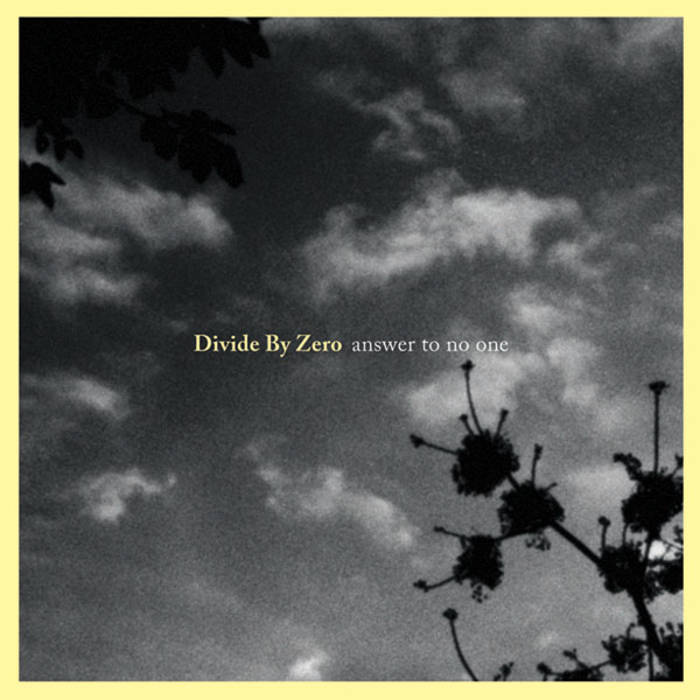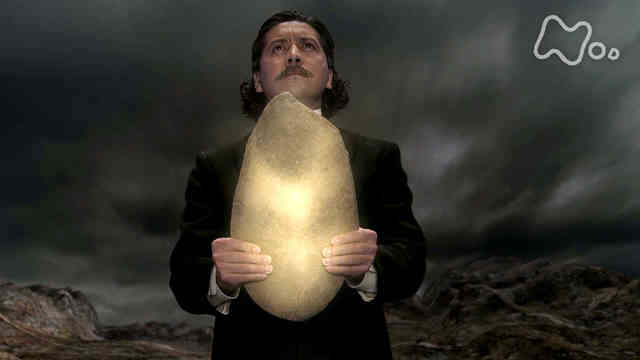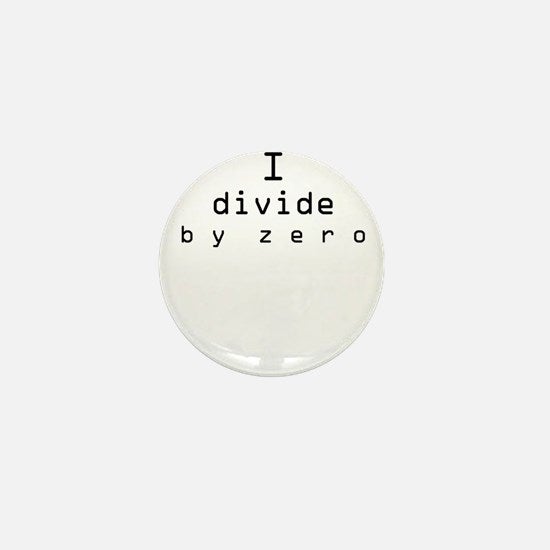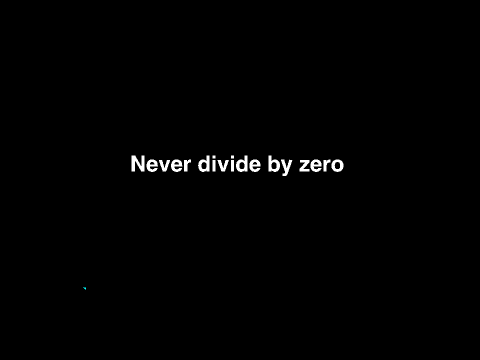Cosmic Controversy: The Big Bang and Genesis 1
Philippidis, Alex,
46 Lenox Ave.
White Plains, NY 10603
White Plains, NY 10603
From" Perspectives on Science and Christian Faith 47.3:190-194 (9/1995)
The name "Big Bang" lives, at least for now. In 1993, astronomer Timothy Ferris issued a challenge to rename the event believed by a consensus of scientists to explain the creation of the universe. Ferris and other astronomy enthusiasts, including television personality Hugh Downs, believed that "Big Bang" trivialized cosmic creation by suggesting that a bomb-like explosion took place. Some 12,800 people in 40 countries accepted the challenge, but a panel of three judges found none of the proposed names to its liking, and left well enough alone.1
The name may not be all that is wrong with the Big Bang. Scientists who interpret the biblical account of cosmic creation in Genesis 1 literally dismiss the Big Bang as evolutionary, even when advanced as a tool of a Creator God.2 Some secular scientists have called the theory empirically unprovable.3 Defending the Big Bang theory are a consensus of cosmologists and some theologians, who see it as a work of the Almighty.4
This paper will explore the development of the Big Bang theory as an explanation for the creation of the universe. The Big Bang will be contrasted with Genesis 1, and criticisms will be presented from biblical theist and secular scientists. An opinion will be offered on reconciling the Big Bang and the Bible.
Big Bang and the Birth of the Universe
The Big Bang theory holds that between 10 and 20 billion years ago, the universe burst and expanded rapidly from a submicroscopic "cosmic egg" containing all matter and energy to a cosmic fireball at least 10 billion degrees Kelvin.5 This fireball grew into an expanding dense cloud of charged particles spewing matter outward in all directions, cooling off as it emitted heat and light. About 300,000 years after the burst, the fireball cooled to 3000 degrees Kelvin, enough to form subatomic particles, then entire atoms of gases. Over time, gravity compressed the gases into galaxies, stars, planets, and the black void ("dark matter") that comprise the modern universe.6
In 1993, a team of astrophysicists reported that the dark matter- 90 percent of the universe and long thought to be uniformly slow-moving ("cold")- likely consists of a two-to-one ratio of cold and light-speed "hot" particles. The team concluded the combination better explains the variety of structures and their sizes in the universe.7
The Big Bang theory was introduced separately by Russian physicist Alexander A. Friedmann in 1922 and Belgian astronomer Georges Lemaitre in 1927. The theory emerged during a decade where cosmology flourished, spurred by Einstein's 1916 introduction of his theory of general relativity. The Big Bang theory also built upon the work of Vesto Melvin Slipher, who in 1913 discovered that galaxies seemed to be moving away from the earth, and the work of American astronomer Edwin P. Hubble, who concluded that the universe is expanding.8
The "Big Bang" received its name in 1950 from one of its most vocal opponents, British astronomer Sir Fred Hoyle, who used the phrase during a BBC radio lecture to ridicule the theory and promote his own alternative "steady-state" theory. Hoyle and two colleagues theorized in 1946 that the universe creates matter constantly and steadily from nothing to fill space created in the cosmos when galaxies drift apart. According to the steady-state theory, the universe has always existed and has always looked the same though it has been in a constant state of flux. One source suggests that Hoyle and his colleagues developed this theory after watching a ghost movie in which the last scene was the same as the first.9
In June 1993, Hoyle and two colleagues tried to restore the credibility of the steady-state theory, which has lost favor among cosmologists over the past four decades,10 by modifying it. The modified theory attributes the creation of matter to galactic emissions of energy and subatomic particles discovered in the years since state-theory was first introduced. The original steady-state theory had several problems, such as its inability to explain how galaxies were formed. However, the theory primarily lost most of its credibility with scientists after it failed to predict and could not explain the cosmic microwave background radiation discovered in 1965 by scientists at Bell Telephone Laboratories. A few years later most cosmologists adopted the Big Bang theory or ceased publishing in the field.11
The radiation- postulated by George Gamow, Ralph Alpher and Robert Herman when they theorized the presence of the cosmic fireball in 1948- offered Big Bang cosmologists the first empirical evidence supporting the theory. The radiation is a low frequency detectable throughout the universe in all directions, and is believed to be a remnant of the heat and light emitted by the cosmic fireball.12 Bell scientists Arno A. Penzias and Robert W. Wilson won the 1978 Nobel Prize in Physics for their accidental discovery; they were trying to eliminate microwave noise picked up by the horn-shaped antenna they were using to measure radio waves from the outer parts of the Milky Way.13
Minute temperature variations in the cosmic microwave background were expected to be found once scientific instruments were precise enough to measure them. But a generation of tests found its texture to be uniformly smooth until 1992, three years after NASA launched the Cosmic Background Explorer (COBE) Satellite. Measuring microwave radiation from the cosmic background believed to have existed only 300,000 years after the theorized Big Bang, the satellite recorded temperature fluctuations of about 30 millionths of a degree Kelvin. A team of scientists confirmed the temperature data in 1992.14 The temperature fluctuations came from differences in the density of cosmic matter and energy, resembling "broad wrinkles in the fabric of space."15 They offered evidence for the Big Bang, especially one version which held that the universe expanded by more than a trillion trillion trillion trillionfold in its first thousand billionth billionth billionth of a second to produce uneven ripples- the inflationary cosmos theorized in 1980 by cosmologist Alan H. Guth.16 Scientists made headlines worldwide by hailing the discovery of temperature fluctuations with uncharacteristicly bold language. "We are viewing the birth of the universe," declared Joseph Silk, an astronomer and longtime Big Bang advocate.17 George Smoot, leader of the research team, likened the discovery to a divine encounter: "If you're religious, it's like looking at God."18
Genesis 1 and the Birth of the Universe
While Smoot and some scientists have spoken of a deity in discussing the Big Bang, even they have not gone so far as to attribute cosmic creation to the God of Israel, focal point of the Judeo-Christian Bible. Biblical theists believe in a God who is sovereign over his creation, beginning with the universe. The Big Bang theory was developed within a scientific community that for more than a century has eschewed biblical theism in favor of wholly material explanations for natural phenomena.19
Biblical theism begins its explanation of the universe with the Bible's first words: "In the beginning God created the heavens and the earth"(Gen. 1:1). In its original Hebrew the verse used the word bara, which signifies divine activity, but never human activity.20 "The heavens" denotes the entire material universe beyond the limits of earth.21 On the first day of Divine creation, light is brought into the cosmic darkness through God's spoken word (Gen. 1:3). Three days later, the sun, the moon and the stars were created within the heavens, visible in the expanse of the sky (Gen. 1:14-18).
The creationist argument in Genesis 1 is reinforced in subsequent Bible passages. God is referred to as "Creator of heaven and earth"(Gen. 14:22). The word "Creator" can also be translated from the Hebrew as Possessor.22 The heavens declare the glory of God (Psalms 19:1) as they were created "by the Word of the Lord"(Psalms 33:6).
The New Testament continues this reasoning, defining the Word as being of one essence with the Lord God (John 1:1) and as made flesh in his son Jesus Christ (John 1:14), who by nature is one with God (John 10:30; Phil. 2:5-6). Thus by Christ, says Paul in his letter to the church at Colosse, "all things were created that are in heaven and that are in earth, visible and invisible"(Col. 1:16). The heavens, says Paul, are the works of God's hands (Heb. 1:10).
Yet Scripture does not rule out the possibility of cosmic expansion. Four times in the book of Isaiah, God is called the One who stretched out the heavens "like a canopy, and spreads them out like a tent" (Isa. 40:22, 42:5, 44:24, 51:13; Psalm 104.2). In creating the universe, God "pitched a tent for the sun"(Psalm 19:4).
Biblical Theists and The Big Bang
Scientists and theologians who believe in biblical theism are divided over the Big Bang. Some base their arguments on science, others on Scripture and still others on both.
A key dividing line among biblical theists is their view on the age of the universe. "Old-earth" advocates say the universe could have been created billions of years ago as in the Big Bang theory, but insist that the creator is the God of Israel described in the Bible.23 "Young-earth" advocates (creationists) believe the universe was created between 6,000 and 10,000 years ago, in the timespan of six 24-hour days cited by Genesis 1, rendering impossible a Big Bang billions of years ago.24
Another point of contention is the methodology of creation. Some biblical theists, like theologian Bernard Ramm and aerospace professor Roy E. Peacock, argue that creation employed a continuous process, allowing for a highly orderly universe to emerge over time from a cosmic void.25 This approach allows for the possibility that recently discovered scientific processes may indeed be evidences of a continuing creation, such as the apparent cosmic expansion that led scientists to theorize the Big Bang. French theologian Henri Blocher believes the Big Bang could have been used by God to achieve his goal of cosmic creation: "Must we tie God to one single method of action?"26 Other biblical theists, however, believe that creation took place instantaneously through the literal series of Divine commands related in Genesis 1. Proponents of this view, called fiat creationists, base their argument on scriptural passages attributing creation to God's spoken word (Psalms 33:9; Psalms 148:5). They also contend that creation ended after the six days of Genesis 1.27
A third conflict exists over the science of Big Bang. Most old-earth adherents agree with the scientific consensus axioms on which the theory is based ...that the cosmos is expanding, that galaxies are moving further away, that the universe expanded rapidly in its first fraction of a second and that a cosmic microwave background exists.28 Creationists have disputed these contentions,29 and have based their arguments on research conducted outside the scientific mainstream.
Creationists also contend that the Big Bang fails as science because it contradicts three scientific principles:30 (1) The empirical provability of all scientific tenets (nobody was around to record Big Bang data); (2) Einstein's relativity theory (the universe was static, with no beginning, he theorized); and (3) The second law of thermodynamics, which holds that disorder and chaos increase over time in closed systems such as machines. Creationists contend the Big Bang universe is a closed system because of their belief that the Big Bang is grounded in theories of evolution, which predict that all phenomena occur without a creator.31
Old-earth advocates, like physicist Alan Hayward, reply by contending the earth is not a closed system since it receives energy from the sun.32 Others have suggested to creationists that God could have violated his laws of matter to create the universe.33 In his later years, Einstein acknowledged a mathematic error (division by zero) in his cosmological constant that counteracted cosmic expansion; he subsequently theorized the universe could have had a beginning.34 Discoveries such as receding galaxies and the cosmic microwave background offer empirical evidence for the Big Bang.35
A fourth conflict between biblical theists exists over the proper interpretation of scriptural text. Creationists often posit that the Bible was written by authors inspired of God and is inerrant; thus Scripture should be interpreted literally.36 Led by theologians such as American Benjamin B. Warfield, evangelical Christians in this century rallied around biblical inerrancy as an alternative to scientific evolution and the liberal theologies that emerged in mainline Protestant denominations.37
Creationists argue that any change in the heavens and earth after the creation Day Six of Genesis 1 would contradict the first words of Genesis 2: "Thus the heavens and the earth were completed in all their vast array." Some, like Henry M. Morris, have even likened proponents of a continually, developing universe to the scoffers Peter warns will doubt Jesus' return to earth during the last days.38
Creationists and old-earth adherents do agree on one important point- that God predates his created order (Psalm 90:2). That differentiates them from the consensus of secular scientists who posit that no creator existed before the "cosmic egg."39
Criticism of Big Bang has not been limited to biblical theists and steady-staters like Sir Fred Hoyle. Secular scientist Eric Lerner has objected to the theory's assumption of creation ex nihilo because it is a doctrine of biblical theism, "a profoundly pessimistic and authoritarian world view." 40 Lerner also suggests that the Big Bang has underestimated the age of the world, which he contends is 80 to 100 billion years old.41 Lerner supports as a scientific alternative to Big Bang cosmology the "plasma cosmology" theory pioneered by Hannes Alfven, a Swedish Nobel laureate. Alfven has contended that the universe has always existed and is governed by laws of electricity and magnetism as well as gravity.42 Alfven's plasma theory has also been promoted by creationists as a valid scientific alternative to the Big Bang.43
Can The Big Bang Be Reconciled with Genesis 1?
Unlike Lerner, many theologians view Big Bang's creation ex nihilo tenet as the key to reconciling cosmology with theology, since ex nihilo creation is also espoused by fundamentalist Christians and other advocates of a literal creationism.44The Rev. Frederic B. Burnham, director of Trinity Institute, a New York-based religious center for advanced studies in science, believes that in seeming to prove Big Bang, the COBE satellite findings also appeared to support scriptural contentions that: (1) A transcendent God acted outside of time and space and created matter, and (2) the universe has a beginning and an end.45 Some scientists have sought to reconcile the Big Bang with Genesis 1. Astronomer Robert Jastrow has maintained that the Big Bang "leads to a biblical view of the origin of the world,"46 to the discomfort of secular scientists.47
Nathan Aviezer of Bar-Ilan University in Israel calls the Big Bang theory "in striking agreement" with scriptural creation.48 He calls the cosmic microwave background the remnant of light decoupled from the cosmic fireball, a decoupling he says proves the truth of Genesis 1:4, where God separated light from darkness. Aviezer also contends the inflationary universe postulated by Guth and others is evidence of the cosmic chaos depicted in Genesis 1:2.49
Aviezer, Burnham, Hayward, and others who agree with them run a great risk in using a scientific theory- however valid to a consensus of scientists - to "prove" biblical truth. The danger is that new evidence can just as easily disprove the Big Bang, or divorce it from the creation account related by Scripture. Unlike many theologians and old-earth scientists, creationists have realized that potential danger and have shied away from yoking themselves to contemporary science, even when presented in terms of "God" as with the COBE data.50
It can be concluded that Big Bang and Genesis 1 cannot truly be reconciled. The two do not offer different explanations for the same phenomenon, but answer different questions. Big Bang attempts to explain how the universe was created. Genesis 1 attempts to explain who created it. Charles E. Hummel has noted that Genesis 1 was not intended to teach the method or date of creation.51 Owen Gingerich, a biblical theist astronomer, has ruled out a reconciliation between science and theology since both disciplines assess their truths through different methods.52
Even biblical theists can agree with Isaac Asimov, the late science-fiction writer and atheist: "Any real comparison between what the Bible says and what astronomers think shows us instantly that the two have virtually nothing in common."53
But unlike Asimov, scientists should not rule out the possibility that biblical truths about the universe can be proven. Within the past three and one-half years, scientists have found new archaeological evidence to corroborate several Old Testament biblical events- the destruction of Jericho by Joshua and the Israelites,54 the existence of Baal,55 the parting of the Red Sea,56 and the victory of King Asa of Judah and King Ben-Hadad of Damascus over King Baasha of Israel.57 There is no reason to believe a similar scientific corroboration of the creation of the universe could not or should not occur.https://www.asa3.org/ASA/PSCF/1995/PSCF9-95Philippidis.html
Cosmic Controversy: The Big Bang and Genesis 1 - American ...
https://www.asa3.org/ASA/PSCF/1995/PSCF9-95Philippidis.html
Others have suggested to creationists that God could have violated his laws of matter to create the universe. In his later years, Einstein acknowledged a mathematic error (division by zero) in his cosmological constant that counteracted cosmic expansion; he subsequently theorized the universe could have had a beginning. Discoveries such as receding galaxies and the cosmic microwave background offer empirical evidence for the Big Bang. A fourth conflict between biblical theists ...
ゼロ除算の発見は日本、再生核研究所
再生核研究所声明 424(2018.3.29): レオナルド・ダ・ヴィンチとゼロ除算
次のダ・ヴィンチの言葉を発見して、驚かされた:
ダ・ヴィンチの名言 格言|無こそ最も素晴らしい存在
我々の周りにある偉大なことの中でも、無の存在が最も素晴らしい。その基本は時間的には過去と未来の間にあり、現在の何ものをも所有しないというところにある。この無は、全体に等しい部分、部分に等しい全体を持つ。分割できないものと割り切ることができるし、割っても掛けても、足しても引いても、同じ量になるのだ。
レオナルド・ダ・ヴィンチ。ルネッサンス期を代表する芸術家、画家、彫刻家、建築技師、設計士、兵器開発者、科学者、哲学者、解剖学者、動物学者、ファッションデザイナーその他広い分野で活躍し「万能の人(uomo universale:ウォモ・ウニヴェルサーレ)」と称えられる人物
そもそも西欧諸国が、アリストテレス以来、無や真空、ゼロを嫌い、ゼロの西欧諸国への導入は相当に遅れ、西欧へのアラビヤ数字の導入は レオナルド・フィボナッチ(1179年頃~1250年頃)によるとされているから、その遅れの大きさに驚かされる:
フィボナッチはイタリアのピサの数学者です。正確には「レオナルド・フィリオ・ボナッチ」といいますが、これがなまって「フィボナッチ」と呼ばれるようになったとされています。
彼は少年時代に父親について現在のアルジェリアに渡り、そこでアラビア数字を学びました。当時の神聖ローマ皇帝・フリードリヒ2世は科学と数学を重んじていて、フィボナッチは宮殿に呼ばれ皇帝にも謁見しました。後にはピサ共和国から表彰もされました。
フィボナッチはイタリアのピサの数学者です。正確には「レオナルド・フィリオ・ボナッチ」といいますが、これがなまって「フィボナッチ」と呼ばれるようになったとされています。
彼は少年時代に父親について現在のアルジェリアに渡り、そこでアラビア数字を学びました。当時の神聖ローマ皇帝・フリードリヒ2世は科学と数学を重んじていて、フィボナッチは宮殿に呼ばれ皇帝にも謁見しました。後にはピサ共和国から表彰もされました。
ローマ数字では「I, II, III, X, XV」のように文字を並べて記すため大きな数を扱うのには不便でした。対してアラビア数字はローマ数字に比べてとても分かりやすく、効率的で便利だったのです。そこでフィボナッチはアラビア数字を「算術の書」という書物にまとめ、母国に紹介しました。アラビア数字では0から9までの数字と位取り記数法が使われていますが、計算に使うにはとても便利だったために、ヨーロッパで広く受け入れられることになりました。(歴史上の数学者たち: レオナルド・フィボナッチ
historicalmathematicians.blogspot.com/2012/03/blog-post.html Traduzir esta página 02/03/2012 -)
ゼロや無に対する恐怖心、嫌疑観は現在でも欧米諸国の自然な心情と考えられる。ところが上記ダ・ヴィンチの言葉は 如何であろう。無について好ましいものとして真正面から捉えていることが分かる。ゼロ除算の研究をここ4年間して来て、驚嘆すべきこととして驚かされた。ゼロの意味、ゼロ除算の心を知っていたかのような言明である。
まず、上記で、無を、時間的に未来と過去の間に存在すると言っているので、無とはゼロのことであると解釈できる。ゼロとの捉え方は四則演算を考えているので、その解釈の適切性を述べている。足しても引いても変わらない。これはゼロの本質ではないか。さらに、凄いこと、掛けても割っても、ゼロと言っていると解釈でき、それはゼロ除算の最近の発見を意味している: 0/1 =1/0=0。- ゼロ除算を感覚的に捉えていたと解釈できる。ところが更に、凄いことを述べている。
この無は、全体に等しい部分、部分に等しい全体を持つ。これはゼロ除算の著書DIVISION BY ZERO CALCULUS(原案)に真正面から書いている我々の得た、達したゼロに対する認識そのものである:
{\bf Fruitful world}\index{fruitful world}
\medskip
For example, in very and very general partial differential equations, if the coefficients or terms are zero, we have some simple differential equations and the extreme case is all the terms are zero; that is, we have trivial equations $0=0$; then its solution is zero. When we see the converse, we see that the zero world is a fruitful one and it means some vanishing world. Recall \index{Yamane phenomena}Yamane phenomena, the vanishing result is very simple zero, however, it is the result from some fruitful world. Sometimes, zero means void or nothing world, however, it will show some changes as in the Yamane phenomena.
\medskip
{\bf From $0$ to $0$; $0$ means all and all are $0$}
\medskip
As we see from our life figure, a story starts from the zero and ends to the zero. This will mean that $0$ means all and all are $0$, in a sense. The zero is a mother of all.
\medskip
その意味は深い。我々はゼロの意味をいろいろと捉え考え、ゼロとはさらに 基準を表すとか、不可能性を示すとか、無限遠点の反映であるとか、ゼロの2重性とかを述べている。ゼロと無限の関係をも述べている。ダ・ヴィンチの鋭い世界観に対する境地に驚嘆している。
以 上
*057 Pinelas,S./Caraballo,T./Kloeden,P./Graef,J.(eds.): Differential and Difference Equations with Applications: ICDDEA, Amadora, 2017. (Springer Proceedings in Mathematics and Statistics, Vol. 230) May 2018 587 pp.



























0 件のコメント:
コメントを投稿